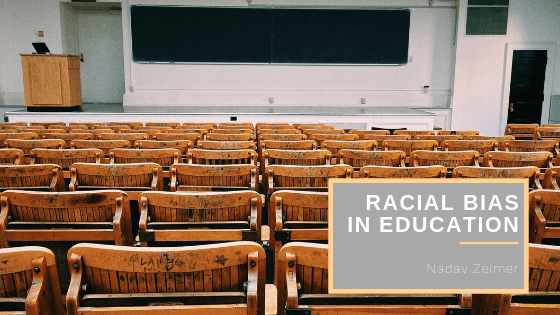Students who experience a transformational educational experience usually do so because an adult in a school saw their potential well before they saw it themselves. The converse is also true.
Teachers expect that 58 percent of their white high school students will receive a four-year college degree, but that only 37 percent of their black students will. The disparity in expectations lines up with the actual educational discrepancy: 49 percent of white students graduate from college, compared to just 29 percent of black students. The expectations that teachers have for students influence their outcomes. When a teacher doesn’t believe in a student’s potential to succeed, it’s likely that the student won’t.
Prospective and current teachers were three times more likely to view black adults’ faces as being angry compared to those of white adults, even in instances where both groups aren’t being emotionally expressive. Educators-in-training also saw the behaviors of students of color as being more aggressive than similar actions performed by white students. It’s clear that there is an issue with racial bias in the classroom, and not just be people you would identify as outwardly racist.
Even well-meaning white people have implicit biases when it comes to race. Implicit bias is the attitude or stereotypes we hold that unconsciously affect how we view people of other races. Harvard offers a variety of tests you can take online that determine where your implicit biases lie. Researchers were even able to find chemical signals of bias in our saliva!
Research shows that students that feel as though they belong in their school will perform better academically. When students of color are unfairly discriminated against, their academic performance suffers, and they end up fulfilling the negative stereotypes that teachers already held about them.
While breaking out of your preconceived racial biases is difficult, there are a few steps that education as a whole can take to make the process easier.
Professional learning
School districts should provide race and sensitivity training with current brain research to entire staffs that will help increase their self-awareness about how their own social identities shaped their educational experiences and how they interpret the actions of other students. Make educators confront the racial biases that they carry with them; this will make them uncomfortable, but ultimately it will help them to work through their feelings.
Form relationships with students
The effort to identify racial ingroup/outgroup perceptions above must not be about ending bias, but helping educators to identify it in themselves and include it as an opportunity to be authentic with their students. Being vulnerable in this way helps to build bonds as students are very sensitive to when people are ‘being real’ and these bonds are proven to increase educational outcomes. When you build relationships with the students in your classroom and learn more about their perspectives, interests, and passions, it becomes easier to separate the stereotypes from the individual students. Educators can use that knowledge to shape their instructional practices and make a classroom that works for every student.
Speak up
Educators should open up conversations about current events and complex issues, like race and racism. Students should be encouraged to practice deep listening and reflection on this issues and should feel safe opening up about how they are affected by them. It gives students the opportunity to communicate their feelings and experiences and helps teachers see things from a different perspective. The solution to racial bias in the classroom isn’t to not talk about it, but instead to speak openly about these biases and how we can work against them.
